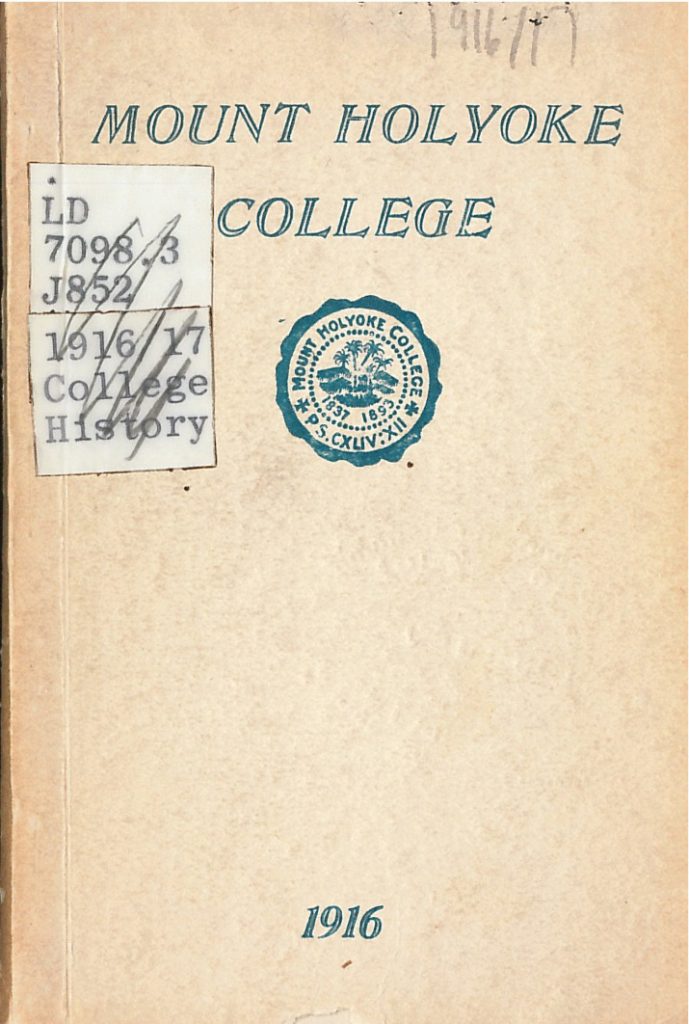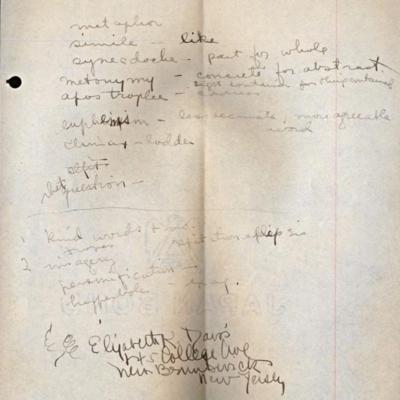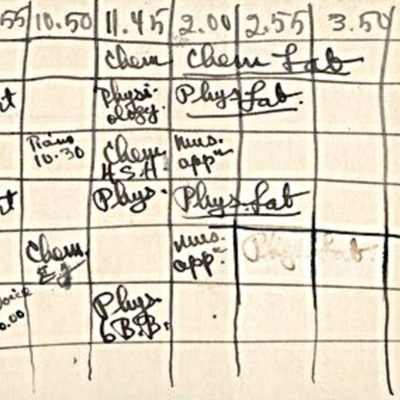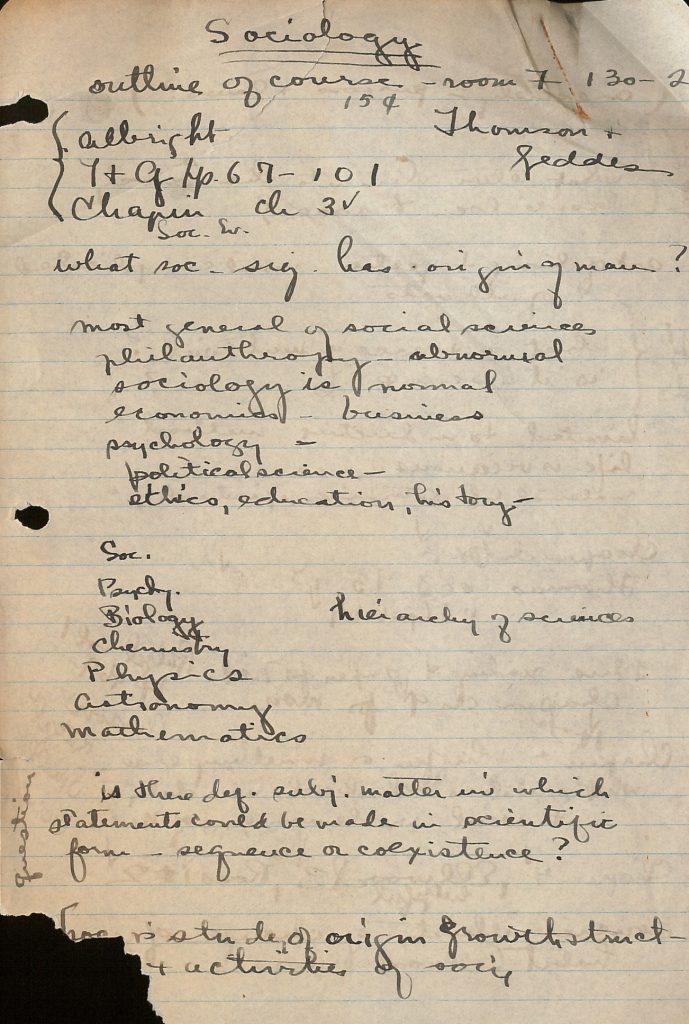Expectations and Requirements: How Much Has Changed
The 1916 Student Handbook was given out to the members of the Class of 1920 during their first year. It includes descriptions of department clubs, athletics, religious services, college songs, financial information, and advertisements for popular nearby locations. It even includes the office hours of the president, registrar, dean, secretary, and physician of the College.
It also includes a section entitled “War Relief Work,” which details the successful work of the War Relief Committee that was created at the beginning of World War I in 1914. According to the handbook, a special interest was paid to Armenian relief work due to a lecture given by Miss Eva Zarmikian, an Armenian graduate of the Women’s College at Constantinople, which emphasized the poor conditions of the Armenian people during this time period.

During the Class of 1920’s time at Mount Holyoke, the requirements for graduation were drastically different: two years of classes were already predetermined, and two years were for elective work. Credit was measured by hours; one class per week counted as one hour, and most of the courses required 6 hours per semester.
The required courses were English, English Literature, Latin or Greek, Greek, French, or German, Mathematics, Biblical Literature, Philosophy and Psychology, History, Physics or Chemistry, and “Any Natural Science”. Each of these courses required 6 hours. After these courses were completed, students moved on to their major and minor work. Thirty-nine hours were given to a major subject and a minor subject, with at least 15 of those hours given to the minor.
The freshman requirements were firm: the students were to take English I, along with four other courses, two of which had to be mathematics and either Latin or Greek. Required mathematics and classical language courses were expected to be completed during the first year.

Studious Students: Nina Babcock and Elizabeth K. Davis
What did the average student’s schedule look like in 1920? Though students didn’t have as much freedom as we have today in choosing their classes, Nina Babcock still maintains an interesting variety of classes on her schedule, very similar to the variety that most of us seek while forming our own class schedules. It seems that Physiology and Chemistry dominate her schedule, with Math, Art, and Voice taking on a relatively minor role in her life during this semester.
Elizabeth K. Davis’ hand-written class notes may be something not all of us can relate to in this technological era, but the content is similar to what we learn today in introductory courses. Her Sociology notes (which appear to be taken on the first day of class) detail what sociology is and its relevancy in relation to other sciences, while her English notes offer definitions for commonly used figures of speech.


